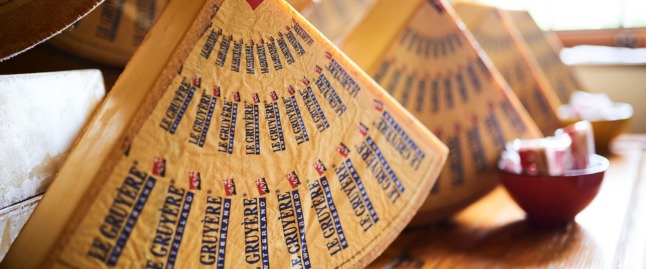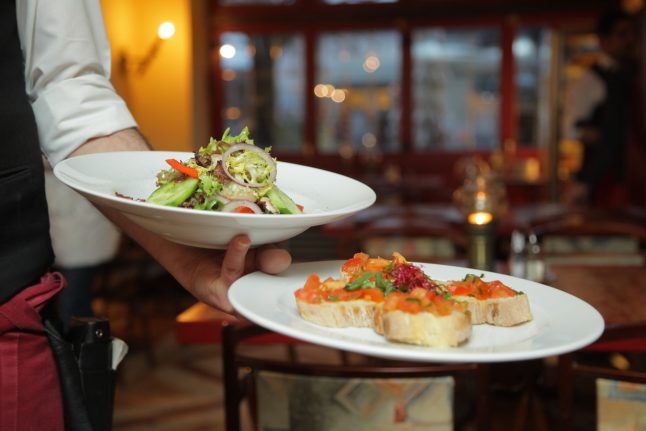Switzerland’s famous cheesemaking hit the headlines this week because for the first time in recorded history, the country’s cheese imports exceed the volume of exports.
This new phenomenon is down to the number of Swiss dairy farms shrinking significantly due to the rising price of milk which no longer covers production costs.
To the Swiss, this will no doubt be a concerning development for a culinary tradition that has become a huge part of the culture.
It’s not the first time that Swiss cheese has been a talking point.
One of the best known Swiss cheeses, the Gruyère, made the news last year, after an American court ruled that this hard cheese, made to exacting standards for centuries in the Gruyères area of the canton of Fribourg, doesn’t have to be manufactured in that region — or even in Switzerland, for that matter — in order to bear the name.
Unlike in Switzerland and the EU, where Gruyère is one of 12 cheeses protected by the designation of origin (Appellation d’origine protégée – AOP) framework, the American judge decided this cheese is just a generic variety rather than a protected product from a specific region.
This means American producers can sell their own cheeses under the Gruyère label, even if it is manufactured in the US and doesn’t taste anything like its original Swiss counterpart.
READ MORE: Why are Swiss angry with Americans about Gruyere cheese?
Swiss cheesemakers said they would appeal the US ruling, but in the meantime the verdict grates on their nerves.
“Gruyère represents a centuries-old traditional recipe, and a region of Switzerland,” an angry Philippe Bardet, director of the Association of Swiss Gruyère Producers, told Switzerland’s Blick newspaper.
“When consumers buy a Gruyère in the United States, they have no idea what awaits them”, he said. “Does the cheese have holes? What milk was it made with?”
Bardet pointed out that Swiss Gruyère producers use only raw milk from cows that eat natural food — pasture grass in summer and hay in winter .
But in America, “they use cheap milk”, he said.

Gruyère cheese is Swiss except in America. Photo by Switzerland Cheese Marketing
It is not surprising that the Swiss are unhappy (yes, cheesed off) about this situation. It’s not that they don’t want to send their cheese abroad — 77,000 tonnes of it are exported each year, representing a market of approximately 694 million francs.
What they do mind is that foreigners sometimes do the cheese injustice.
READ MORE: 15 facts you may not have known about Swiss cheese
Making Gruyère a generic style the United States is one example. Then, there is a common US practice of referring to any cheese with holes as “Swiss”, though in Switzerland only the Emmentaler has holes.
The Swiss have the beef with France as well, even though the French have proven for generations that they do know how to make cheese.
However, tensions heated up between the two countries during the World Fondue Championships in 2019 over what cheese goes into a fondue.
While the French mostly minded their own businesses, the Swiss side stirred trouble along with the hot cheese in the pots.
“This is a serious matter, we are not here to kid around”, said Jérôme Lefevre, one of the jurors.
Lefevre is Swiss, but when it comes to fondues, he was not exactly neutral.
“The fondue is Swiss. The French don’t know how to make it. Cheeses must come from the Gruyère region and have no holes. In France, they use cheese with holes”, he sniffed.
‘Fondue is Swiss… the French just don’t know how to make it’
Why do the Swiss have this …holier-than-thou attitude about cheese?
One reason may be that the Swiss like everything done to perfection and believe they do everything better than anyone else — certainly better than the French.
But there is much more to this phenomenon.
According to Jérémie Forney, a Neuchâtel anthropologist specialising in agro-food systems, Switzerland’s “unconditional love” for their cheeses has social, cultural and historical aspects.
To them, cheese is not merely a food item but has a deeper meaning as well: it symbolises their ancestral heritage and national identity.
“A vast majority of people continue to link the image of Swiss cheeses to idyllic mountain meadows and happy cows in the pastures”, he told RTS public broadcaster.
Here are some facts about Swiss cheeses…and Swiss people:
- Switzerland produces more than 450 varieties of cheese, including such regionally-based ones as Gruyère, Tilsiter, Appenzeller, and Emmentaler
- According to Switzerland Cheese Marketing, the holes in Emmentaler are made by bacteria which transform the lactose into carbon dioxide and create air pockets. However, a 2015 study by Swiss agriculture body Agroscope countered this, saying the holes were caused by tiny bits of hay present in the milk
- The Swiss consume about 23 kg of cheese per capita
- Making cheese was a traditional way to preserve milk which would otherwise spoil rapidly. Cheese then grew into an important commercial commodity. To this day, Swiss cheese remains a natural product, with no preservatives, food colourings or flavour enhancers used
As much as the people in Switzerland love their cheese, they have lots of love left over for another Swiss product as well: chocolate. But that’s another story.



 Please whitelist us to continue reading.
Please whitelist us to continue reading.
Member comments